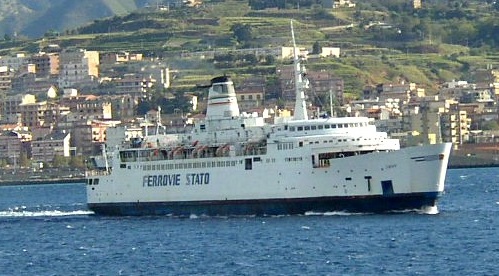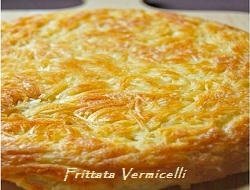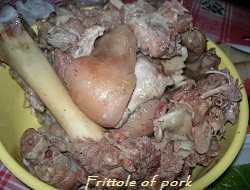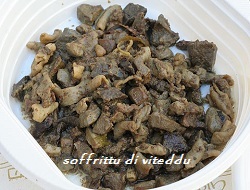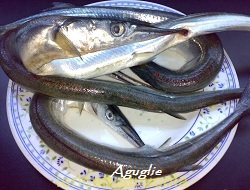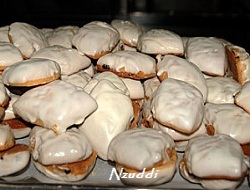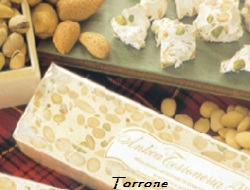Reggio di Calabria
| |
| |
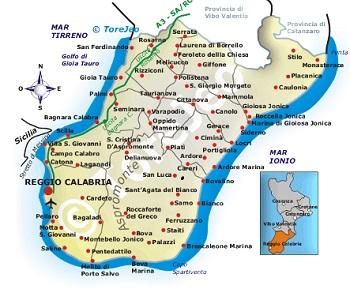 The city was officially founded around 720 BC by the Ancient Greeks who called it Rhégion (meaning "it breaks away" or "cape of the king") and was a well established part of Magna Graecia during which time i has suffered frequent invasions and catastrophic earthquakes. The city was officially founded around 720 BC by the Ancient Greeks who called it Rhégion (meaning "it breaks away" or "cape of the king") and was a well established part of Magna Graecia during which time i has suffered frequent invasions and catastrophic earthquakes.
Reggio is Calbria's largest and oldest city and is located on the "toe". It stands on the eastern coast of the Strait of Messina at the foot of the western slopes of the Aspromonte .
It is well renowned for its panoramic seaside with botanical gardens, art nouveau buildings, beautiful beaches, and its 3,000 years of history with the old Aragonian Castle and the Museo Nazionale della Magna Grecia where the 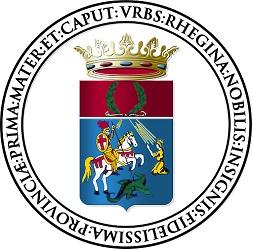 famous Riace bronzes (Bronzi di Riace) are located. famous Riace bronzes (Bronzi di Riace) are located.
Reggio retains a somewhat rural ambience despite its sizable population.Reggio di Calabria, fable and reality- Commercial and industrial city, built on the ruins left by the 1908 earthquake.
It stands on the eastern coast of the Strait of Messina at the foot of the western slopes of the Aspromonte .
Projected towards a Mediterranean future its present plan is that of a modern city but it still preserves all the reassuring lukewarmness of the provincial small town and the attractive charm of the tourist place.
The promenade is its perfect synthesis: an apotheosis of palms, ficus, very rare
tropical and exotic species, a few meters away from the shore: one of the most delightful scene of the world.
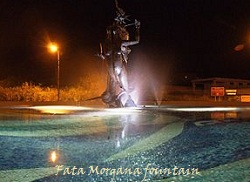 Among nature, culture and tradition, amusement and curiosity, a journey for the discovering of the *Fata Morgana who by legend lives on the bottom of the sea and deceives travellers with illusions of visions. Among nature, culture and tradition, amusement and curiosity, a journey for the discovering of the *Fata Morgana who by legend lives on the bottom of the sea and deceives travellers with illusions of visions.
The Via Marina seafront promenade, with Sicily coast and the Etna Volcano in the background, provides a spectacular view, over a km long with an abundance of tropical trees, plants and monuments. (Impossible to find a parking in summer).
(*A Fata Morgana is an unusual and complex form of superior mirage that is seen in a narrow band right above the horizon. It is an Italian phrase derived from the vulgar Latin for "fairy" and the Arthurian sorceress Morgan le Fay, from a belief that these mirages, often seen in the Strait of Messina, were fairy castles in the air or false land created by her witchcraft to lure sailors to their death.
This optical phenomenon occurs because rays of light are bent when they pass through air layers of different temperatures in a steep thermal inversion where an atmospheric duct has formed)
Reggio Calabria is a city of art and science, jealous of the inheritance of its glorious past but outstretched towards a future of development and progress.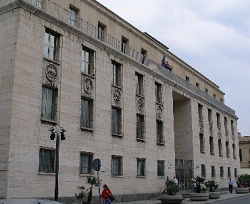
The National Archeological Museum preserves magnificent and ancient memories of the prehistoric, Greek and roman eras, and the vigorous Riace warriors seem to defend such a great richness; the artistic symbol-place is the Municipal Theater Francesco Cilea, which today is living again its ancient splendor.
The “Mediterranean University” and the University for Foreigners, the Academia of Belle Arti, the Conservatorio represent the “knowledge engines” in a reality which boasts one of the highest school degrees in Italy.
Reggio Calabria is a reality in a full cultural ferment: from cinema to literature, from social sector to sport, clubs and associations multiply, young people share ideas about very different themes.
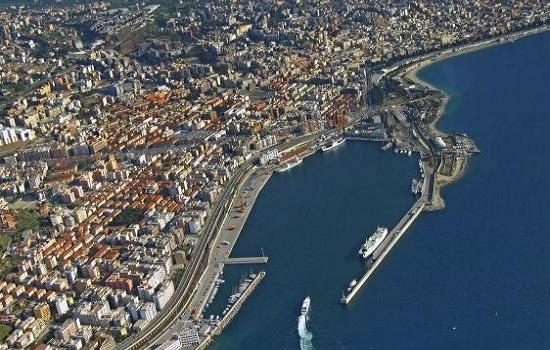
Its present plan is that of a modern city, built on the ruins left by the 1908 earthquake. 
It extends along the coast in a NE-SW direction except at the mouth of the Annunciata , north of which is the port and maritime station, and at the mouth of the Calopinace, where the town adapts to the lie of the coastline.
Its territory extends along the western slope of the Aspromonte, taking in the coastal strip from Villa San Giovanni to Capo dell' Armi, and inland to Monte Basilico'.
The great earthquakes in 1783 and 1908 destroyed beautiful Byzantine, 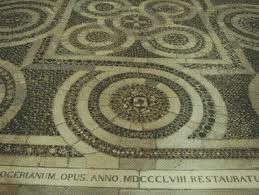 16th c. and Baroque churches in the old city, very little still remains, some Greek and Roman ruins have come to light; in addition to the notable collections in the Museum, the remains of the 4th c. city walls are interesting as are a small odeon or theater, probably 3rdc. and the remains of the Roman baths with interesting black and white mosaic floors. 16th c. and Baroque churches in the old city, very little still remains, some Greek and Roman ruins have come to light; in addition to the notable collections in the Museum, the remains of the 4th c. city walls are interesting as are a small odeon or theater, probably 3rdc. and the remains of the Roman baths with interesting black and white mosaic floors.
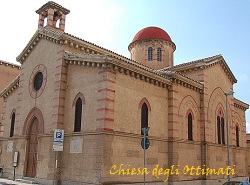 Little is left of the Byzantine, medieval, and Renaissance city, after very fine churches in the city were destroyed as well as the Basilian Abbey of Santa Maria di Terreti, nearby there are some important remains (Arab style stuccos, columns, gravestone) in the museum. Little is left of the Byzantine, medieval, and Renaissance city, after very fine churches in the city were destroyed as well as the Basilian Abbey of Santa Maria di Terreti, nearby there are some important remains (Arab style stuccos, columns, gravestone) in the museum.
Some other important remains ( the mosaic floor) are in the church of the Ottimati.
This was once a Byzantine church with a central plan with some resemblance to the Cattolica in Stilo and the church of San Marco in Rossano.
Of this church remains a painting by the florentine A. Ciampelli (1597) ancient columns and part of the floor.
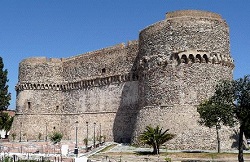 The castle founded in the Middle Ages and reconstructed by the Aragon in the 1400 is an impressive monument. the part facing the city is well preserved, with round towers, bulk walks and wide walls. The castle founded in the Middle Ages and reconstructed by the Aragon in the 1400 is an impressive monument. the part facing the city is well preserved, with round towers, bulk walks and wide walls.
With the exception of works of art in various churches, the list of the remains of the ancient city of Reggio closes with the beautiful Baroque angel found among the ruins and recently (1967) placed on a pedestal near the temple of Victory, and with some buildings reconstructed after the earthquake in 1783. all the churches, rebuilt in modern times, are of mainly eclectic form.
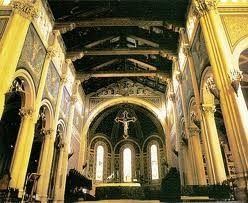 The cathedral carries the name of Maria SS. Assunta in Cielo and can be found in the centre of the city, exactly in front of piazza Duomo which is part of the Pastorale area of Reggio Calabria. The cathedral carries the name of Maria SS. Assunta in Cielo and can be found in the centre of the city, exactly in front of piazza Duomo which is part of the Pastorale area of Reggio Calabria.
The internal history of the church is one of the most complex of the city, many times damaged by war and natural disasters. The origins of the cathedral date back to St. Paul who came to Reggio during a journey he passed in chains on his way to face Cesare in Rome in 56 AD.
The cathedral is a pseudo-Romanesque with three-naved interior and triple transept which does not exceed the width of the naves.
There are fragmentary ancient column of San Paolo, flanked by decorative Baroque sculpture, paintings attributed to Solimena and by the 17th c. Sicilian D. Maroli, the tombs of Matteo de Januaro and Annibale degli Afflitti (1663), also a tomb, by Gasparre Fosso, 1592, (Renaissance and even Michelangelesque).
The chapel of the Sacramento was carefully restored after the earthquake. Baroque statues and other decorations have been partially reconstructed. the magnificent 16th c. Neapolitanj red, orange and marble inlaid work has been preserved.
The cathedral treasure includes silver and gold from the 1400 and later, as well as sacred vestments, furnishings and tapestries in the Confraternity of the Annunziata.
Modern decoration and sculptures by F. Jerace are also found in the 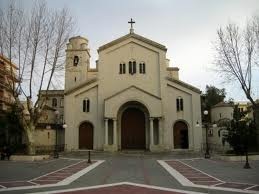 cathedral . cathedral .
The Church of Sant'Agostino has painting by S.Conca (1748) and the church of the Assunta has beautiful 17th c. sculpture.
The appearance the rebuilt city took after the 1908 earthquake is worthy of note, with many elliptical buildings in which Renaissance, classical, Baroque and sometimes medieval elements combine to create the pleasing effect accentuated.
The various public buildings are 20th century.
The National museum, housed in a building by M. Piacentini is of interest for its prehistoric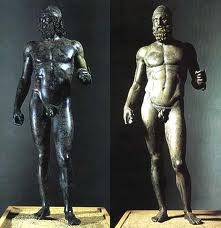 and archeological collection (finds from Locri and other cities of Magna Grecia, as well as Roman remains), and archeological collection (finds from Locri and other cities of Magna Grecia, as well as Roman remains),
among which the outstanding Riace Bronzes, its collection of works of medieval and modern art, and also for its numismatic collection.
Note : The Museum is scheduled to re-open in the upcoming spring(2014) followings a 'lengthy' renovation.
The well equipped City Library has a section dedicated to regional matters and another on Corrado Alvaro.
Reggio is an ideal resort with a beautiful beach and can be used as a base for many excursions. Water sports, fishing and hunting.
Airport. Ferry-boat service to Messina. Hydrofoil to Messina , Giardini (Taormina) and the Aeolian islands.
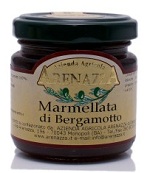 Specialities: citrus fruits, olives, wild asparagus, aubergines, dried tomatoes in olive oil. Specialities: citrus fruits, olives, wild asparagus, aubergines, dried tomatoes in olive oil.
Among the typical dishes are the Calabrian antipasti, 'frittata di vermicelli', 'pizza alla regina', 'sagne chine', 'maccheroni alla pastora', 'pasta ncasciata', 'crispeddi', 'ghiotta di Natale', 'frittole' of pork, 'capocollo', 'suffrittu di viteddu', aguglie, swordfish, stuffed kid, 'viscottu a caponata', 'panzerotti', 'Nzuddi', orange and bergamot marmalades, dried figs with almonds, torrone, honey, wines, olive oil.
|
|
| AIRPORT |
The
Reggio di Calabria
"Tito Minniti" Airport
(IATA: REG, ICAO: LICR),
also known as
Aeroporto dello Stretto (Airport of the Strait)
serves mainly
the Province of Reggio and the Province of Messina, and partially the
Province of Vibo Valentia; |
| AIRPORT WWW |
| Where to stay |
| |
| Where to eat |
| |
| Tour Guide |
| |
|
| |

|


 The city was officially founded around 720 BC by the Ancient Greeks who called it Rhégion (meaning "it breaks away" or "cape of the king") and was a well established part of Magna Graecia during which time i has suffered frequent invasions and catastrophic earthquakes.
The city was officially founded around 720 BC by the Ancient Greeks who called it Rhégion (meaning "it breaks away" or "cape of the king") and was a well established part of Magna Graecia during which time i has suffered frequent invasions and catastrophic earthquakes.









